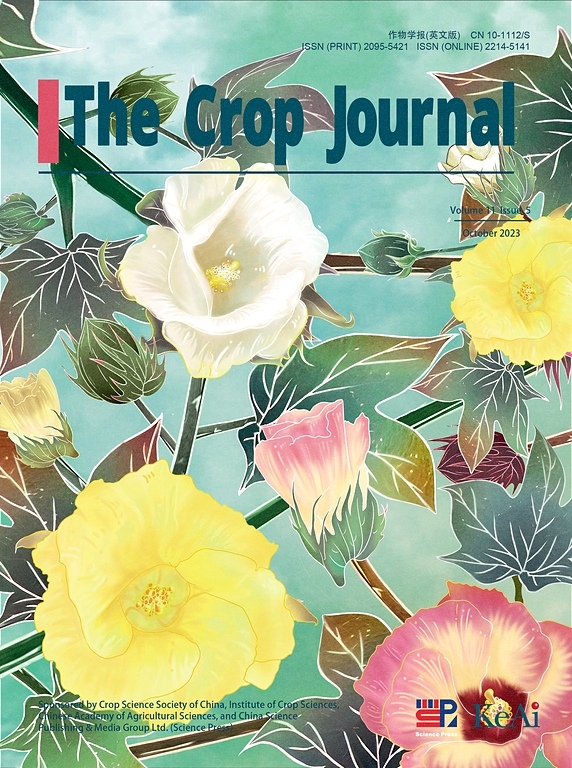Rice–wheat comparative genomics: Gains and gaps
IF 5.6
1区 农林科学
Q1 AGRONOMY
引用次数: 0
Abstract
Rice and wheat provide nearly 40% of human calorie and protein requirements. They share a common ancestor and belong to the Poaceae (grass) family. Characterizing their genetic homology is crucial for developing new cultivars with enhanced traits. Several wheat genes and gene families have been characterized based on their rice orthologs. Rice–wheat orthology can identify genetic regions that regulate similar traits in both crops. Rice–wheat comparative genomics can identify candidate wheat genes in a genomic region identified by association or QTL mapping, deduce their putative functions and biochemical pathways, and develop molecular markers for marker-assisted breeding. A knowledge of gene homology facilitates the transfer between crops of genes or genomic regions associated with desirable traits by genetic engineering, gene editing, or wide crossing.稻麦比较基因组学:进展与差距
大米和小麦提供了人类所需热量和蛋白质的近40%。它们有共同的祖先,属于禾本科。鉴定其遗传同源性对培育具有优良性状的新品种具有重要意义。一些小麦基因和基因家族已经根据它们在水稻中的同源性进行了鉴定。稻麦同源学可以鉴定出调控两种作物相似性状的遗传区域。稻麦比较基因组学可以在关联或QTL定位的基因组区域中识别候选小麦基因,推断其可能的功能和生化途径,并开发用于标记辅助育种的分子标记。基因同源性的知识有助于通过基因工程、基因编辑或宽杂交在作物之间转移与理想性状相关的基因或基因组区域。
本文章由计算机程序翻译,如有差异,请以英文原文为准。
求助全文
约1分钟内获得全文
求助全文
来源期刊

Crop Journal
Agricultural and Biological Sciences-Agronomy and Crop Science
CiteScore
9.90
自引率
3.00%
发文量
638
审稿时长
41 days
期刊介绍:
The major aims of The Crop Journal are to report recent progresses in crop sciences including crop genetics, breeding, agronomy, crop physiology, germplasm resources, grain chemistry, grain storage and processing, crop management practices, crop biotechnology, and biomathematics.
The regular columns of the journal are Original Research Articles, Reviews, and Research Notes. The strict peer-review procedure will guarantee the academic level and raise the reputation of the journal. The readership of the journal is for crop science researchers, students of agricultural colleges and universities, and persons with similar academic levels.
 求助内容:
求助内容: 应助结果提醒方式:
应助结果提醒方式:


